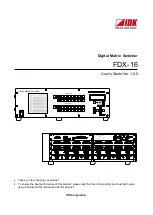
Network topologies and redundancy
3.1 Network topology and redundancy
SCALANCE X204RNA SCALANCE X204RNA EEC (PRP)
14
Operating Instructions, , C79000-G8976-C294-03
Parallel Redundancy Protocol
Figure 3-1
Schematic diagram of the Parallel Redundancy Protocol
With the Parallel Redundancy Protocol (PRP), each node must transmit Ethernet frames on
two independent, parallel networks. These are two physically separate networks with a bus
(linear), star or ring topology. The PRP destination device must also be connected to the two
networks. This then receives each frame twice. The first frame is forwarded to the
application. The second frame received is recognized and discarded. This achieves N-1
redundancy without reconfiguration (= bumpless switchover).
There are already end devices equipped with two Ethernet interfaces that are capable of
handling the Parallel Redundancy Protocol (Double Attached Nodes PRP = DANP).
On the other hand, there are many end devices starting with S7 controllers right through to
control computers that communicate using TCP-IP but do not support PRP and some even
have only one Ethernet Interface. With all these devices, a SCALANCE X-200RNA can be
connected upstream from them. This allows access for Single Attached Nodes (SAN) to PRP
networks.
Industrial Ethernet bus (linear), star or ring structures with switching functionality can be
implemented cost-effectively with devices of the SCALANCE X product line. You will find a
list of usable network components in "Table 10-2 Compatible SCALANCE X devices
(oversized frames - 1532 bytes) (Page 113)".
Summary of Contents for SCALANCE X204RNA EEC
Page 130: ......















































